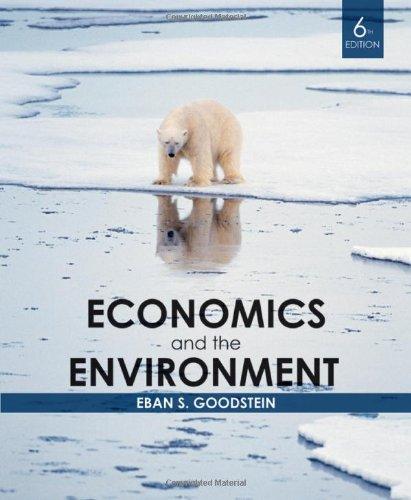Consider the following social welfare function: SW = Ua(Xnc a , Xc a,Xc a, Pa) + Ub(Xnc
Question:
Consider the following social welfare function:
SW = Ua(Xnc a , Xc a,Xc∼
a, Pa) + Ub(Xnc b ,Xcb
,Xc∼
b, Pb) + Ud(Xnc d ,Xcd
,Xc∼
d, Pd) + . . .
where:
X = consumption bundle P = pollution nc = noncompetitive c = competitive
a,
b, d = people
∼ a,∼ b,∼ d = all other people besides
a, b, d 1. Place positive and negative signs above all the terms in the function, illustrating whether they increase or decrease each person’s utility.
2. Will an overall increase in the level of noncompetitive consumption always increase social welfare?
3. Let Xcb be a new house overlooking a canyon. Let P be the reduction in scenic beauty experienced by the community. Finally, let Xc∼
b be the status impact on folks who are not b arising from the newMcMansion. Assume that the positive increment to individual utility for individual b of an increase in Xcb equals
$10,000 in consumer surplus and that the negative status increment to other people is −$500. Assume also that a one-unit increase in Xcb produces one unit of P, which further causes a −$1,000-unit impact on utility for everyone exposed. In a world of five people (including Mr. b), what are the private benefits to Mr. b of consuming one more unit of Xcb
? What are the external costs of a one-unit increase in Xcb
? What will be the net increase in SW of a one-unit increase in Xcb
?
4. What parts of the development decision in question 3 would a conventional benefit-cost analysis capture? What would it miss?
Step by Step Answer:







